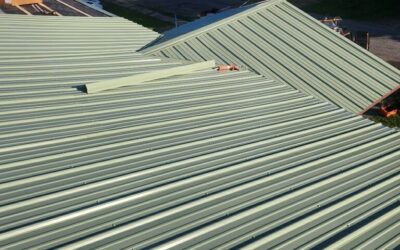Where Is the Hip on a Roof? A Complete Guide for Homeowners and Contractors
If you’ve ever looked at a house and admired the neat angles and slopes of its roof, chances are you’ve seen a hip roof in action. While gable roofs tend to get more attention, the hip roof—and more specifically, the hip—plays an essential role in roofing architecture. But many homeowners still ask, “Where is the hip on a roof?”
This blog will explain exactly what a hip is, where to find it, how it fits into the anatomy of a roof, and why it matters. Whether you’re planning a roofing project or just curious about home construction, this guide will help you understand hip roofs in full detail.
1. What Is a Hip on a Roof?
Let’s start with the basics. A hip in roofing terminology is the external angle formed by the meeting of two sloping sides of a roof. More specifically, it’s the diagonal line that runs from the ridge (top) of the roof down to the eaves (bottom) at the corner of a building.
Each sloping plane that contributes to this intersection supports one half of the hip. When four roof planes slope downward and meet at the corners of a building, you end up with four hips. This forms the common hip roof structure.
2. Identifying the Hip on a Roof
To physically locate the hip on a roof, look at the corners of the roofline. Unlike a gable roof that only has two sloped sides, a hip roof slopes on all four sides, and the corners where these slopes meet form the hips.
From above, a roof with hips will look like an interlocking set of triangles and trapezoids, with each hip cutting diagonally across the corner of the structure.
In an attic, a hip can be identified by finding the hip rafter—a diagonal beam that runs from the top ridge down to the corner of the building. These hip rafters are load-bearing and form the structural backbone for the hip.
3. The Role of Hip Rafters
The hip rafter is the main framing member that runs along the hip. This diagonal rafter connects the ridge board at the top of the roof to the corner of the wall plate (or base structure of the house).
Hip rafters support jack rafters, which are smaller rafters that connect from the hip rafter to the outer wall plate. These work together to form the sloping surfaces of the roof that converge into a hip.
In summary:
- Hip rafter: runs diagonally from the ridge to the corner.
- Jack rafters: fill in the sloped roof between the hip rafter and the wall plate.
- Common rafters: run from the ridge straight down to the eaves (used in flat roof sections).
4. Different Types of Hip Roofs
There are multiple roof styles that use hips. Each type positions the hips differently, but all follow the same basic principle of diagonal intersections between roof planes.
a. Standard Hip Roof
- Four equal sloping planes.
- Hips are located at all four corners.
b. Pyramid Hip Roof
- Four equal sides sloping inward to a central point.
- Hips run from each corner to the central apex.
c. Cross-Hipped Roof
- Two hip roofs intersect.
- Creates multiple hips and valleys.
d. Half-Hip or Dutch Gable Roof
- Combines features of hip and gable roofs.
- Only part of the roof has hips.
5. Structural Benefits of Hip Roofs
One reason hip roofs—and their hips—are so popular is because of their structural advantages.
a. Wind Resistance
Hip roofs are more aerodynamic. The slopes on all sides deflect wind better than gable roofs, which can catch wind and create uplift.
b. Load Distribution
Weight from snow and rain is evenly distributed down each hip and into the home’s framing, reducing stress on any single wall.
c. Durability
Because of their symmetrical design, hip roofs are more resistant to sagging and shifting over time.
6. Hips vs Valleys: Don’t Get Confused
Hips are often confused with valleys, but they serve opposite functions.
- A hip is an external angle—a ridge formed where two roof planes meet and angle outward.
- A valley is an internal angle—a trough formed where two roof planes meet and angle inward.
Think of it like this:
- Hips shed water away.
- Valleys collect water and direct it toward the gutters.
Both are important, but they perform opposite structural and drainage roles.
7. Where Is the Hip Located in Different Home Styles?
The position of the hip can vary based on the architectural style of the home.
Ranch-Style Homes
Hips are often simple and visible, running from the ridge to the corners.
Colonial or Victorian Homes
More complex rooflines mean multiple hips intersecting at different angles.
Modern or Contemporary Homes
May use hip roofs in combination with flat or shed-style roofs, so the hips may only appear on one portion of the structure.
8. Roofing Materials for Hip Roofs
Just like other roofing types, hip roofs can be built with a variety of materials, including:
- Asphalt shingles
- Metal panels
- Clay or concrete tiles
- Slate
- Wood shakes
No matter the material, extra care must be taken at the hip itself to ensure it’s properly sealed and protected from water intrusion.
9. Installing Hip Roofs: What Contractors Must Know
Framing a hip roof is more complex than a gable roof and requires precise measurements and cuts.
Key Steps in Framing a Hip Roof:
- Layout: Accurately determine the slope and roof pitch.
- Cutting Rafters: Hip rafters require double angle cuts.
- Measuring Jack Rafters: Each jack rafter gets shorter toward the corner.
- Structural Support: Hip rafters must tie securely into wall framing.
Improper framing at the hip can lead to structural issues and roof failure, so it’s best left to professional contractors.
10. Ventilation at the Hips
One challenge with hip roofs is attic ventilation. Because there are no vertical gable ends, traditional gable vents aren’t an option.
Ventilation Options for Hip Roofs:
- Ridge vents (at the peak)
- Soffit vents (under the eaves)
- Hip ridge vents (along the hips)
- Power attic fans
Without proper ventilation, hot air and moisture can become trapped under the roof deck, causing mold, rot, and premature wear.
11. Common Roofing Problems at the Hips
Because the hip is a major structural element, it’s also a potential weak point if not properly maintained.
Potential Issues:
- Shingle wear: Shingles along the hip experience more movement and weather exposure.
- Improper flashing: Hips need tight waterproofing to prevent leaks.
- Cracked ridge caps: These cover the hip seam and can deteriorate over time.
Routine roof inspections should always include a close look at the hips.
12. Replacing a Hip Roof: What to Expect
If you’re replacing your existing roof with a hip roof, know that this can be more expensive due to:
- Increased framing complexity
- More roofing materials needed
- Longer installation time
However, many homeowners find the cost worth it due to the added durability and aesthetics of a hip roof.
13. DIY Tips for Identifying Hip Damage
You don’t have to be a roofer to recognize potential problems with your hip roof. Here are a few signs to look for:
- Sagging corners: Could indicate a structural issue with the hip rafter.
- Water stains in attic corners: May signal leaks where hip flashing is failing.
- Loose or missing ridge caps: These protect the seams along the hip.
- Uneven shingle wear: Excessive wear along hip lines could mean shingles weren’t properly secured.
14. Why Homeowners Should Know Where the Hip Is
Understanding where the hip is located helps you:
- Communicate more effectively with roofing contractors
- Understand your roof’s structure during inspections or repairs
- Spot early warning signs of wear and tear
- Make smarter renovation decisions
Whether you’re adding a new dormer, installing solar panels, or replacing roof decking, knowing where the hips are makes all the difference.
15. When to Call a Professional
Any issues related to hip framing, ventilation, or waterproofing should be left to professionals. A licensed roofing contractor can:
- Inspect your hips for damage
- Reinforce or reframe sagging hip rafters
- Install proper flashing and ridge caps
- Advise on the best materials for hip coverage
Don’t try to DIY complex roofing repairs. The hip plays a critical role in the roof’s support system.
Conclusion: The Hip Is the Cornerstone of a Strong Roof
To sum it up: the hip on a roof is the diagonal seam that forms at the corners where two sloped planes meet. It’s supported by hip rafters and jack rafters, and it provides structure, style, and strength to your entire roof system.
Now that you know where the hip is on a roof—and what role it plays—you’ll have a better understanding of your home’s structure and be more equipped to take care of it properly.
If you’re planning a roof replacement or repair and want a roofing system that’s stable, long-lasting, and great-looking, a hip roof might be the perfect choice.
 (440) 307-2060
(440) 307-2060


